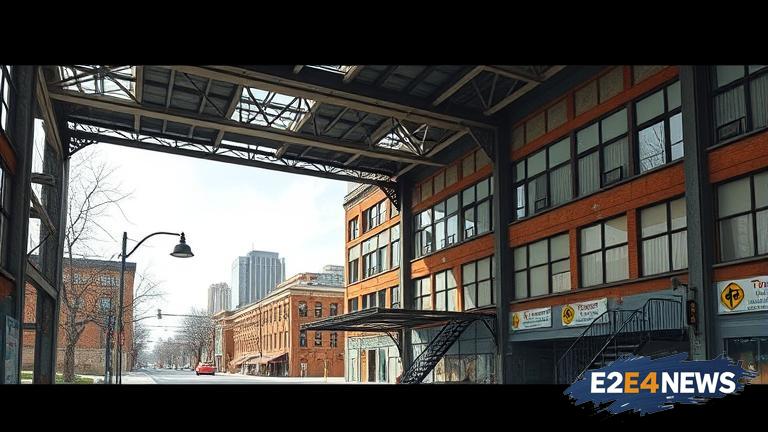The concept of adaptive reuse has gained significant traction in recent years, as cities around the world seek to revitalize underutilized spaces and reduce their environmental footprint. By repurposing old buildings, developers can create unique and functional spaces that not only preserve the past but also contribute to a more sustainable future. This approach has been particularly successful in urban areas, where abandoned warehouses, factories, and other industrial sites have been transformed into thriving commercial and residential districts. One of the primary benefits of adaptive reuse is its potential to reduce waste and minimize the demand for new construction materials. By reusing existing structures, developers can significantly decrease the amount of energy required for demolition and new construction, resulting in a substantial reduction in greenhouse gas emissions. Additionally, adaptive reuse projects often involve the preservation of historic buildings, which helps to maintain the cultural and architectural heritage of a community. In many cases, these projects also involve the incorporation of green building technologies and sustainable design principles, further enhancing their environmental benefits. The economic benefits of adaptive reuse are also noteworthy, as these projects can help to stimulate local economies by creating new jobs, attracting businesses, and increasing property values. Furthermore, adaptive reuse projects can serve as a catalyst for community engagement and social interaction, as they often involve the creation of public spaces, such as parks, plazas, and community centers. In terms of design, adaptive reuse projects can be highly innovative, as architects and developers seek to balance the preservation of historic features with the need for modern amenities and functionality. This can result in the creation of truly unique and captivating spaces that reflect the history and character of a community. Some notable examples of adaptive reuse projects include the transformation of old warehouses into trendy loft apartments, the conversion of historic churches into community centers, and the redevelopment of abandoned factories into vibrant arts districts. These projects not only demonstrate the potential of adaptive reuse to revitalize urban spaces but also highlight the importance of collaboration and creativity in the development process. As cities continue to evolve and grow, it is likely that adaptive reuse will play an increasingly important role in shaping their physical and social landscapes. By embracing this approach, developers, architects, and community leaders can work together to create more sustainable, equitable, and thriving urban environments. The benefits of adaptive reuse are numerous, and its potential to transform urban spaces is vast. As the world becomes increasingly urbanized, it is essential that we prioritize sustainable and community-focused approaches to development, and adaptive reuse is certainly a step in the right direction. With its potential to reduce waste, preserve history, and foster community engagement, adaptive reuse is an exciting and innovative trend that is sure to continue shaping the future of urban development. In conclusion, adaptive reuse is a powerful tool for revitalizing urban spaces, and its benefits extend far beyond the environmental and economic realms. By prioritizing this approach, we can create more vibrant, sustainable, and equitable communities that reflect the unique character and history of each city. The rise of adaptive reuse is a testament to the creativity and ingenuity of developers, architects, and community leaders, and it will be exciting to see how this trend continues to evolve and shape the urban landscape in the years to come. Adaptive reuse is not only a practical solution to the challenges of urban development but also a celebration of the history and culture of our cities. As we move forward, it is essential that we continue to prioritize this approach, and work together to create a more sustainable, equitable, and thriving urban future. The potential of adaptive reuse to transform urban spaces is vast, and its benefits are numerous. It is a trend that is sure to continue shaping the future of urban development, and one that we should all be excited about. With its focus on sustainability, community engagement, and historic preservation, adaptive reuse is an approach that has the potential to create truly unique and captivating urban environments. As the world becomes increasingly urbanized, it is essential that we prioritize approaches to development that are sustainable, equitable, and community-focused, and adaptive reuse is certainly a step in the right direction.
